We all know very well that there are uninhabited islands. There are also densely populated lands where, literally, there is nowhere for an apple to fall from the number of inhabitants. 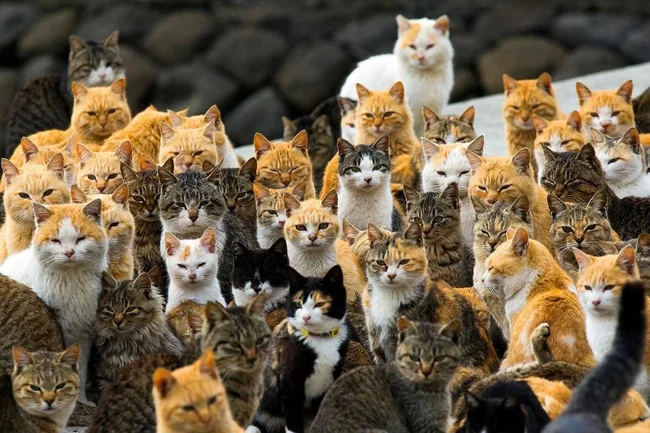
But I’m sure you’ve never heard of islands that are inhabited exclusively by animals. And in this case, I don’t mean wild and exotic representatives of the fauna, but quite ordinary cats, rabbits and horses. 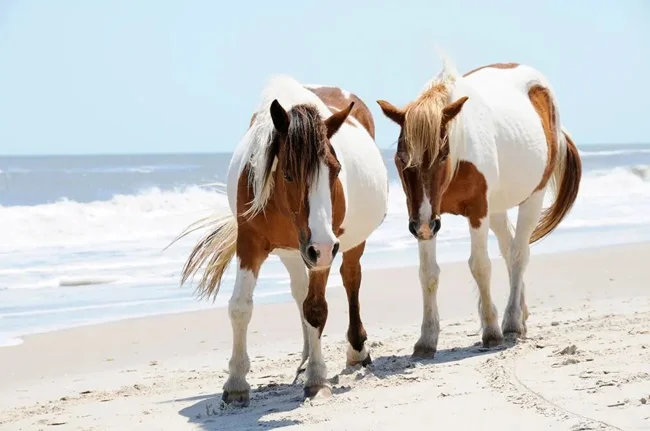
Cat Island 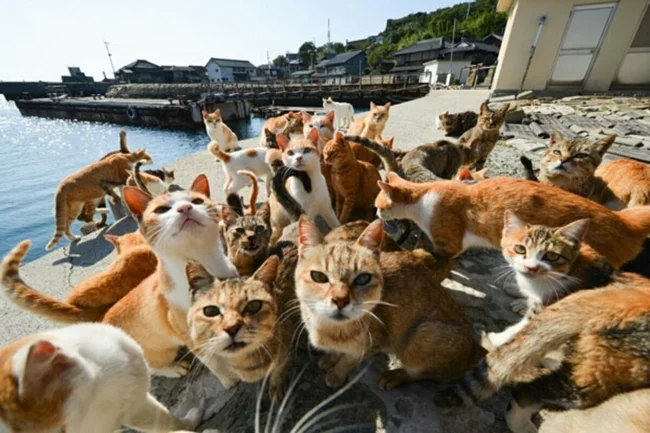
This name would be perfect for some touching film or animated film telling about the difficult life of our little brothers. However, this name, or rather the nickname, was given to a small Pacific island in the northeast of Japan - Tashirojima or, in fact, “Cat Island”. In addition to cats, about 100 people live on the island - all of them are residents of a small fishing village. But the exact number of tailed and mustachioed inhabitants is unknown. 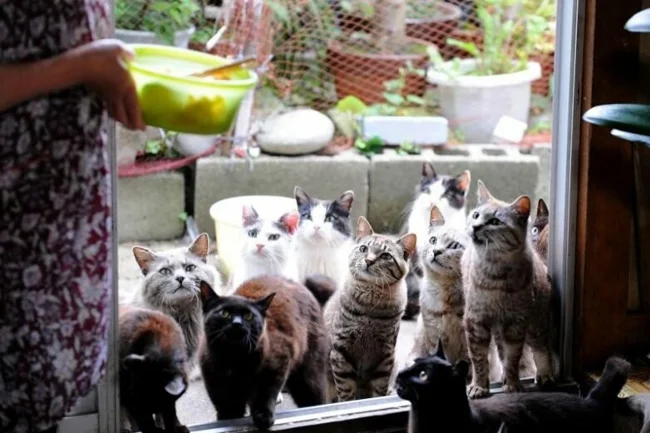
Tashirojima is not a historical homeland for the cats living there. The fact is that at one time the island was a center for silkworm breeding, and in order to protect the harvest from mice and other small pests, cats were brought to its territory. The inhabitants of the island took care of semi-wild animals, fed them and protected them. 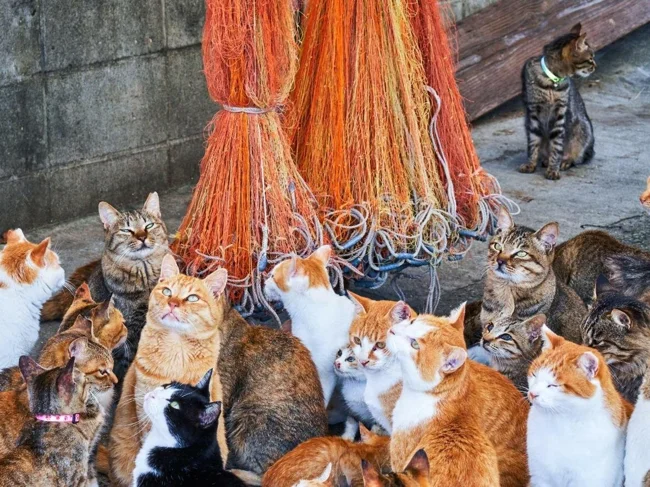
And the fishermen, in turn, gave the tailed inhabitants the remains of the day’s catch as gratitude. How could it be otherwise, because cats had a unique and inexplicable ability to predict sea weather, which directly affected the quality of the catch. 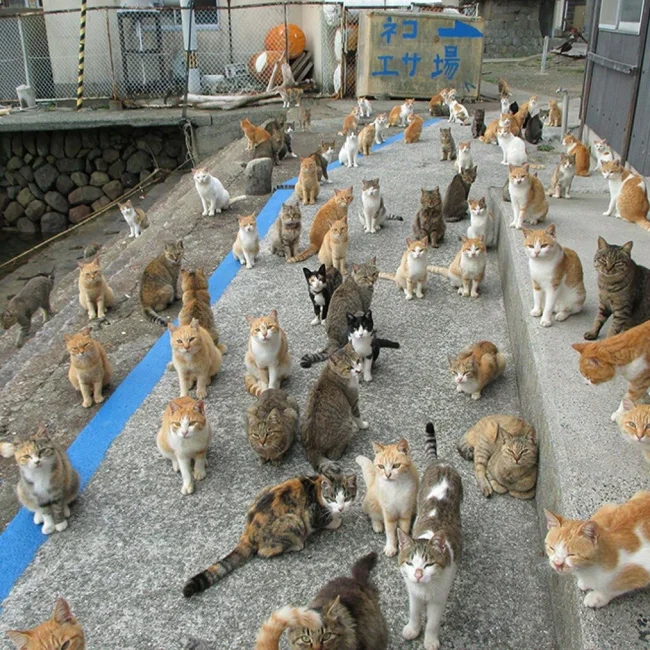
Also, local residents believed (and still believe to this day) that cats bring good luck, and therefore their numbers are not regulated in any way. Moreover, the island even has a strict rule according to which dogs are strictly prohibited from entering its territory. 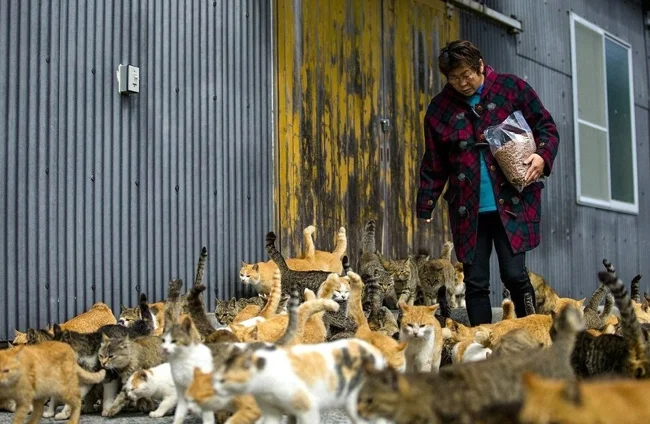
In March 2011, Tashirojima was seriously damaged by a devastating earthquake and then a tsunami that flooded the island's lowlands. Despite the scale of destruction, human casualties were avoided...and again thanks to the cats, who sensed worsening weather conditions in advance. Residents managed to move to higher points of the island in advance and take shelter from the approaching tsunami. 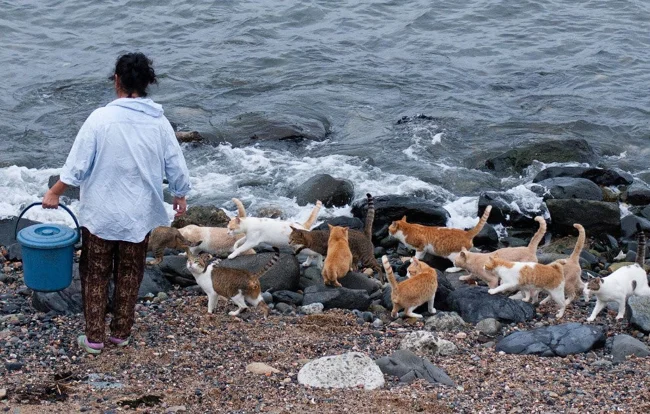
Waterfowl Island 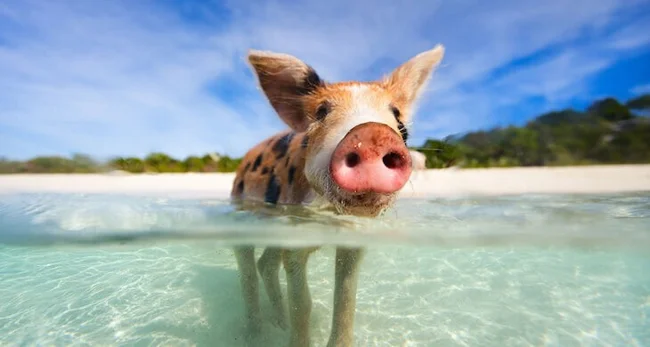
Officially, it is called, of course, differently - Big Major Kay. This is a small uninhabited island in the Exuma region (Bahamas), on the western beach of which lives a population of several dozen pigs and piglets, but not ordinary ones, but waterfowl! It is to them that the island owes its nickname - Pig Island (Pig Island). 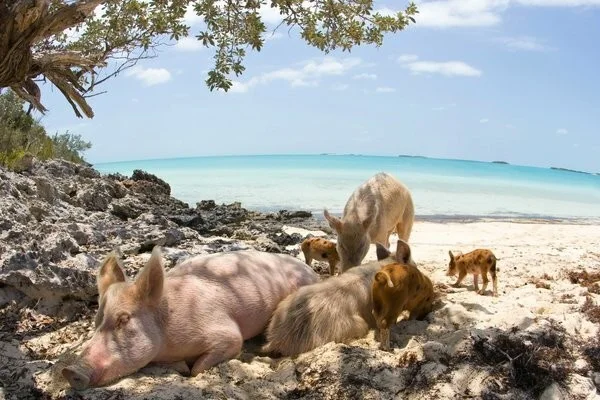
This piece of paradise, protected from the effects of tropical storms by other, larger islands, belongs entirely to cute pigs. And no people. Well, if only tourists drop by with something tasty... 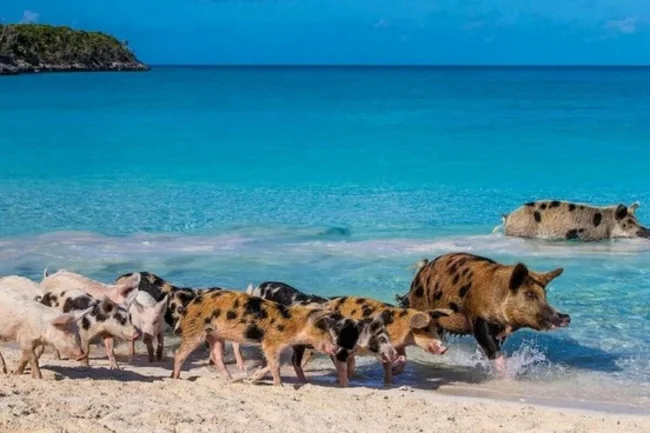
Very little is known about how pigs actually appeared on the island of Big Major Cay, which is why their history is associated with a number of different legends. According to one of them, pigs were brought to the island by pirates, who left the animals as a strategic reserve of food... just in case, so to speak. But this very “every” case never came: the pirates did not return, and the pigs remained to live on the island, having managed to adapt to new unfamiliar conditions. 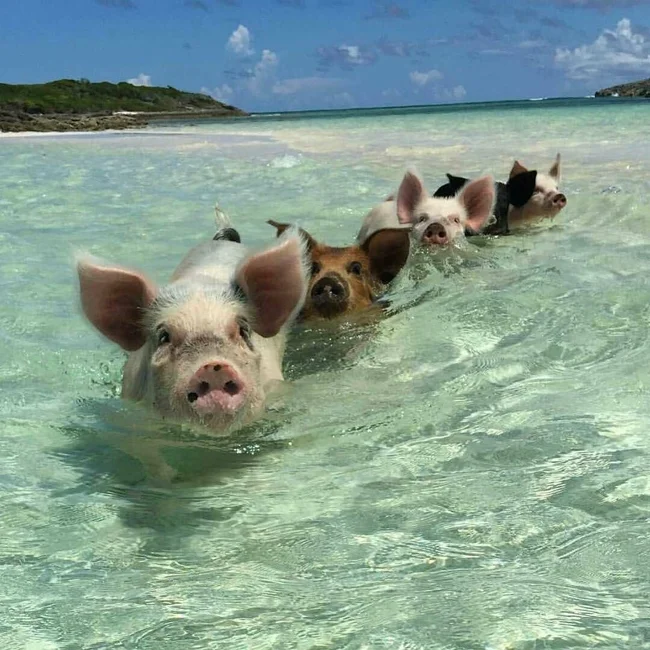
According to another version, a shipwreck occurred not far from the shores of Big Major Cay. The ship, carrying a wide variety of cargo, including pigs, crashed on the reefs, and the animals were the only surviving “passengers”. Thanks to their ability to confidently float on the water, the pigs made it to the shore, where they actually settled. 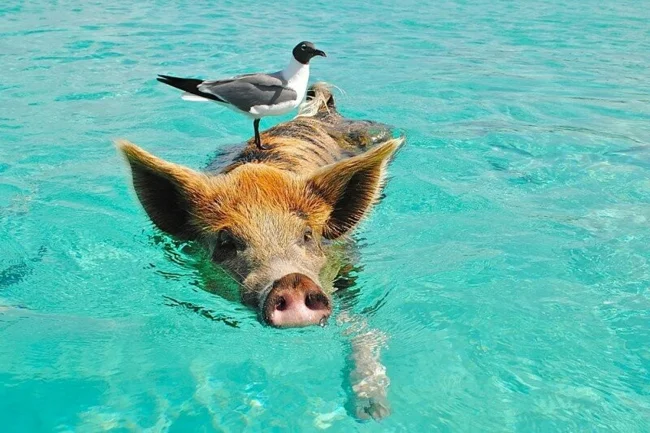
However, the most realistic of all is the version according to which pigs appeared on Big Major Cay in the 90s through the efforts of pig farmers from the neighboring, quite civilized island of Staniel Cay. The pigs were literally evicted to a desert island due to numerous complaints from local residents about the unpleasant smell emanating from the pigsties. But on Big Major Key the pigs didn’t bother anyone, and the living conditions were much better and more pleasant. 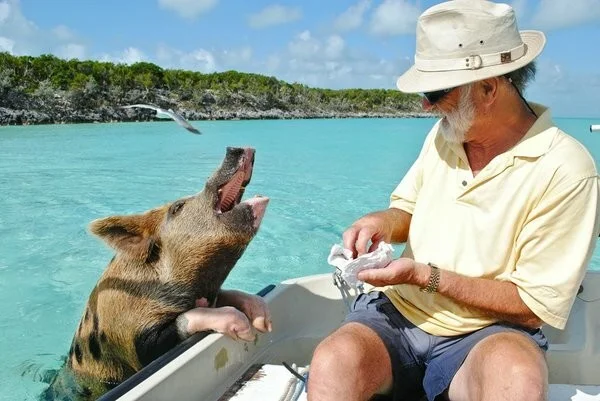
Once noticing that pigs now lived on the previously uninhabited island, the inhabitants of the neighboring islands began to feed them, sailing to the shore in boats. Therefore, today, upon noticing a ship approaching the island, the pigs throw themselves into the water and swim towards the treat. 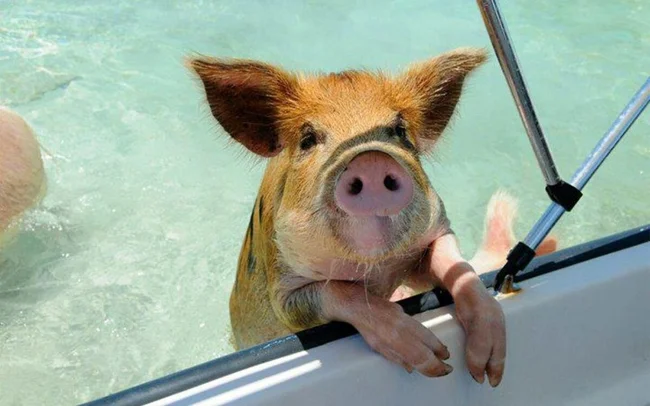
Rabbit Island 
The island of Okunoshima or Usagi Shima has become famous throughout the world thanks to the very large population of rabbits living on its territory. And although these fluffy creatures are extremely cute, the story of their appearance on the island would be hard to call cute... 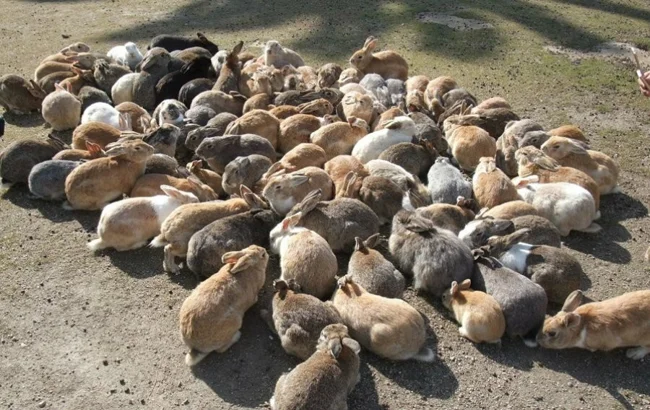
In 1925, Japan signed the Geneva Protocol banning the development and production of poisonous gases. In simple terms, “the ban on chemical weapons.” However, this fact did not in any way affect the desire of the Japanese to continue their experiments. It’s just that now the chemical weapons program has become secret. 
A laboratory of this type required an appropriate place, and Okunoshima Island became such a place. Relatively small (only 1500 by 800 meters), located in the Inland Sea of Japan, remote from the capital - these and many other factors determined the choice of the ideal location for the secret military plant, which was built in 1929. 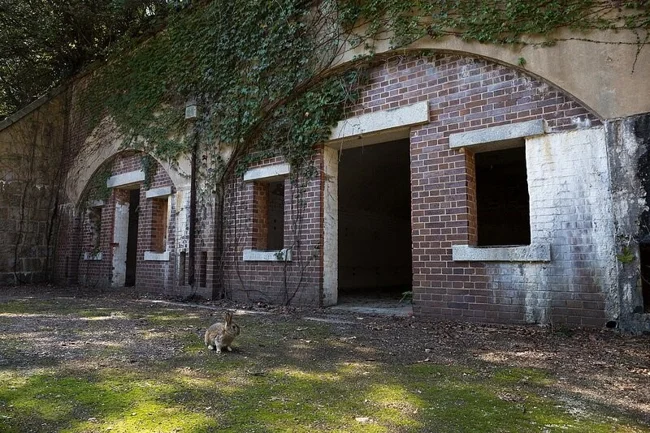
The plant synthesized more than 6,000 tons of mustard and tear gas annually. And rabbits... rabbits, as you might guess, were used for experiments - the effects of poisonous gases were tested on them. 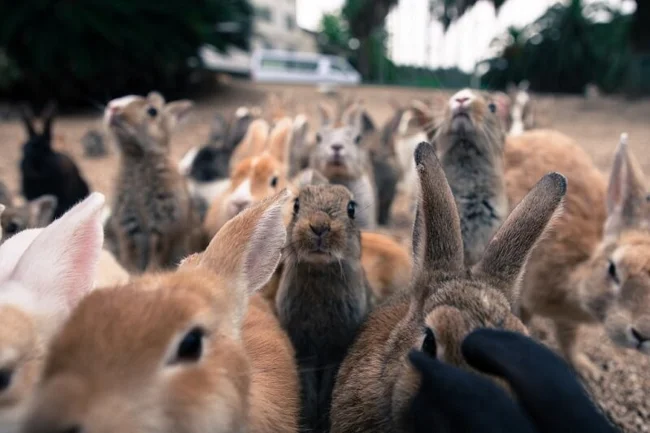
After the end of World War II, American troops closed the deadly factories and disposed of the poisons. Residents of the island who worked at the enterprise were forced to disperse in all directions, and the rabbits that participated in the terrible experiments were destroyed. Then where, one wonders, did they appear on the island again? There are several opinions on this matter. 
Firstly, they could have been brought to the island to test the state of the environment after the closure of chemical plants. Secondly, the rabbits could have appeared thanks to schoolchildren who came on an excursion in the 70s. Thirdly, rabbits could have lived on the island before. 
In any case, whatever the true reason, the absence of predators, human activity, as well as the ban on hunting, did their job: furry creatures bred on the island in huge numbers. Despite the fact that rabbits are not domesticated, they are not at all afraid of people and willingly communicate with tourists. 
Pony Island 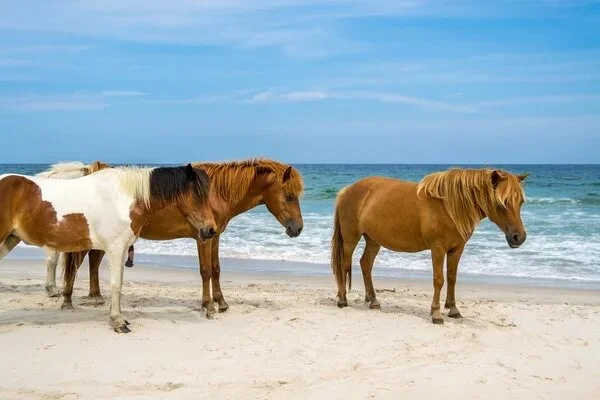
Off the coast of Maryland and Virginia there is a small island called Assateague, which is home to wild ponies. Moreover, in such quantities that researchers are still trying to understand how they appeared there. There is a theory that these ponies are believed to be descendants of the horses of the Spanish conquistadors who were shipwrecked near these shores in the 16th century. 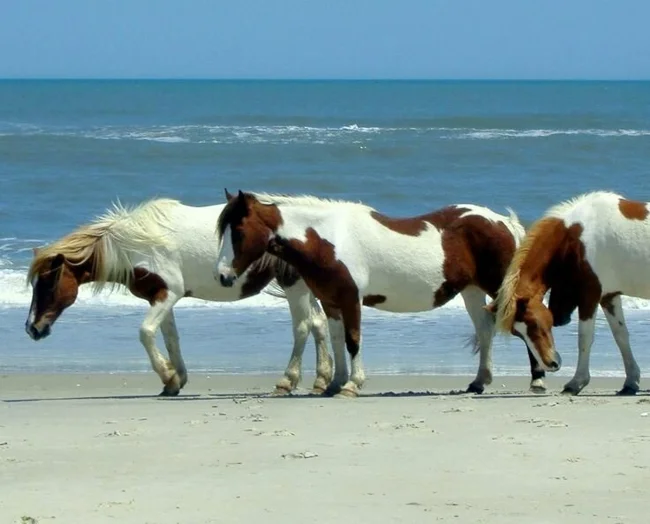
Most likely, they belonged to Spanish or North African breeds that either escaped themselves or were released by the colonialists. Or maybe the colonialists deliberately brought them to the islands in 1669, pursuing some of their own goals. 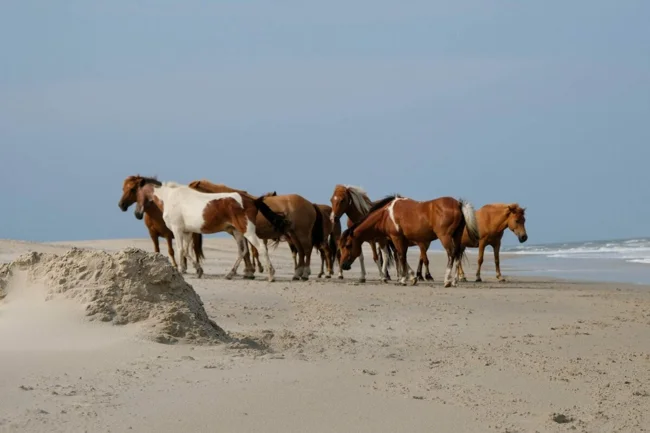
Until the beginning of the twentieth century, no one suspected the existence of these ponies. However, at present they are under the protection of a specially organized Department. The ponies' fame grew thanks to M. Henry's children's novel The Chincoteague Mystery, and after 21st Century Fox made a film about them in 1961, these horses, and at the same time their island, remain the center of attention to this day. 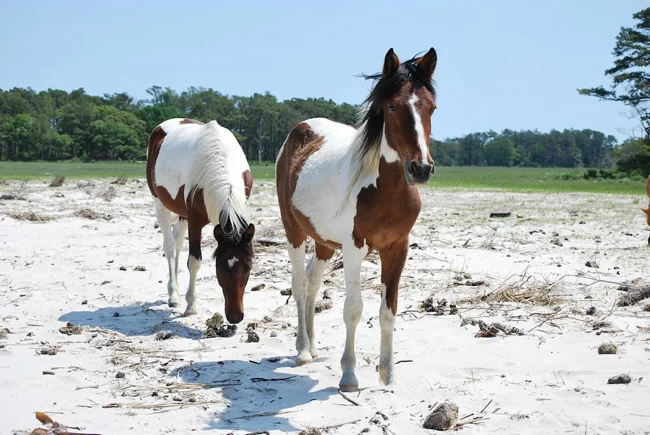
Today, the Department holds numerous events dedicated to these small horses, the proceeds from which go to improve this breed. 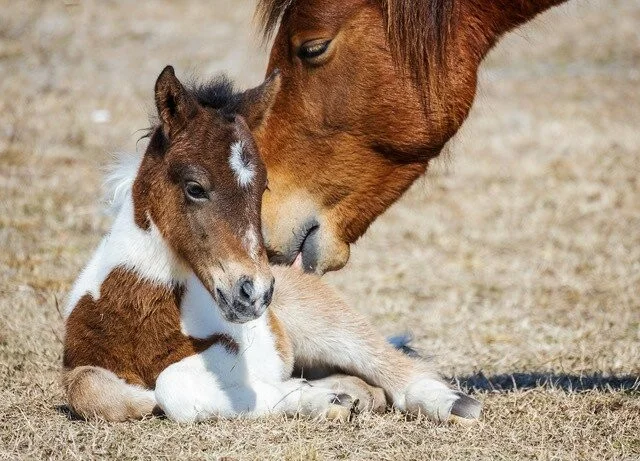
0 comments

